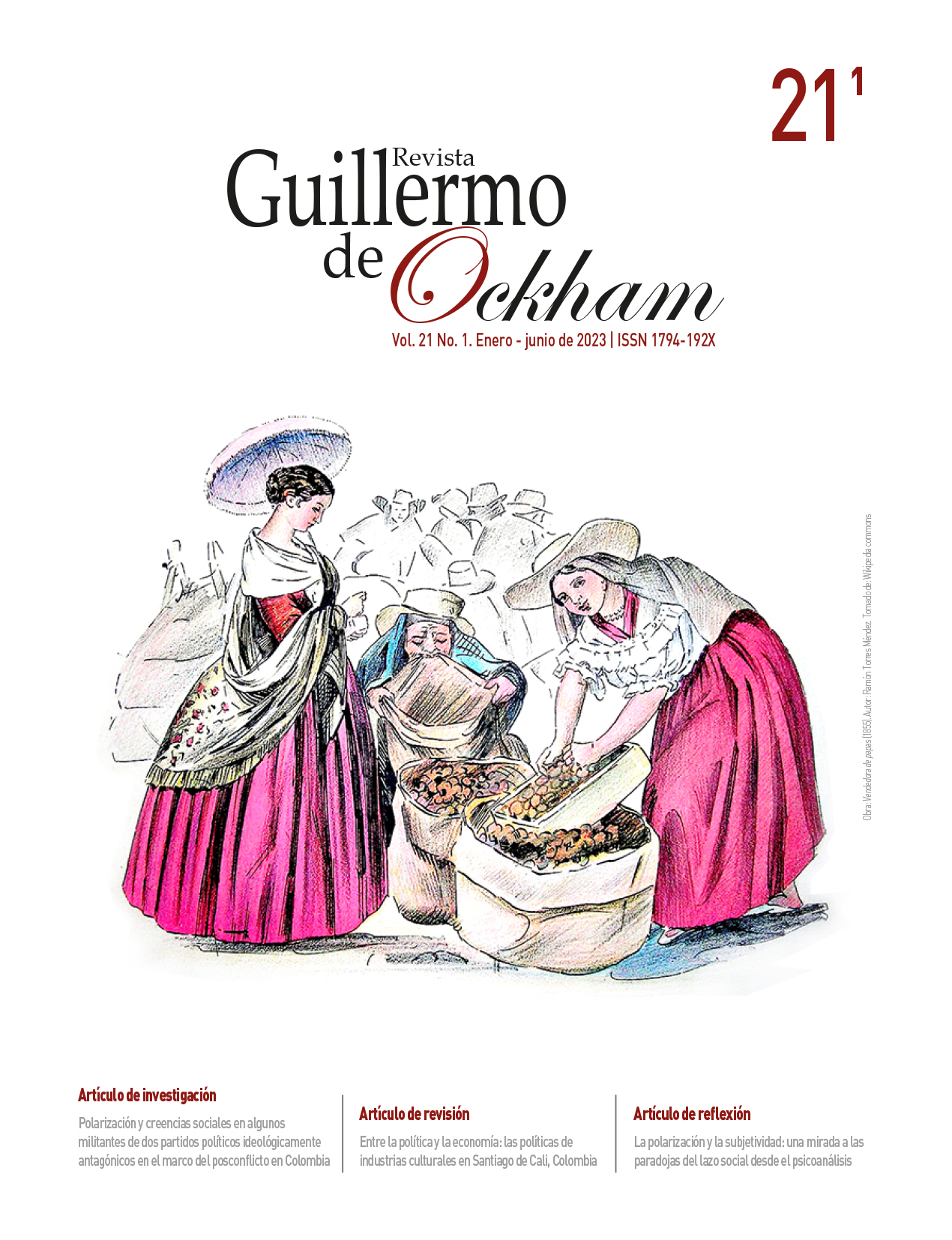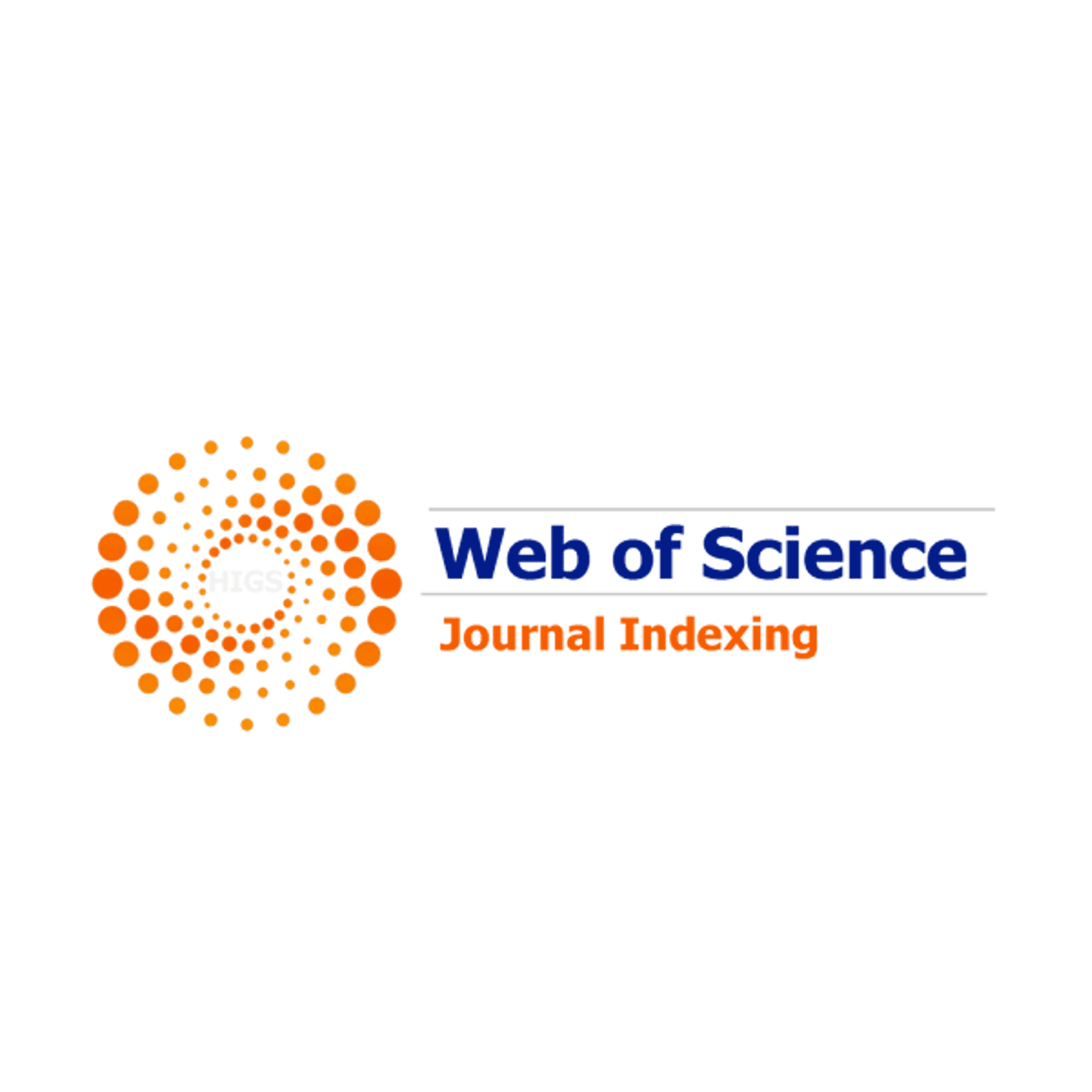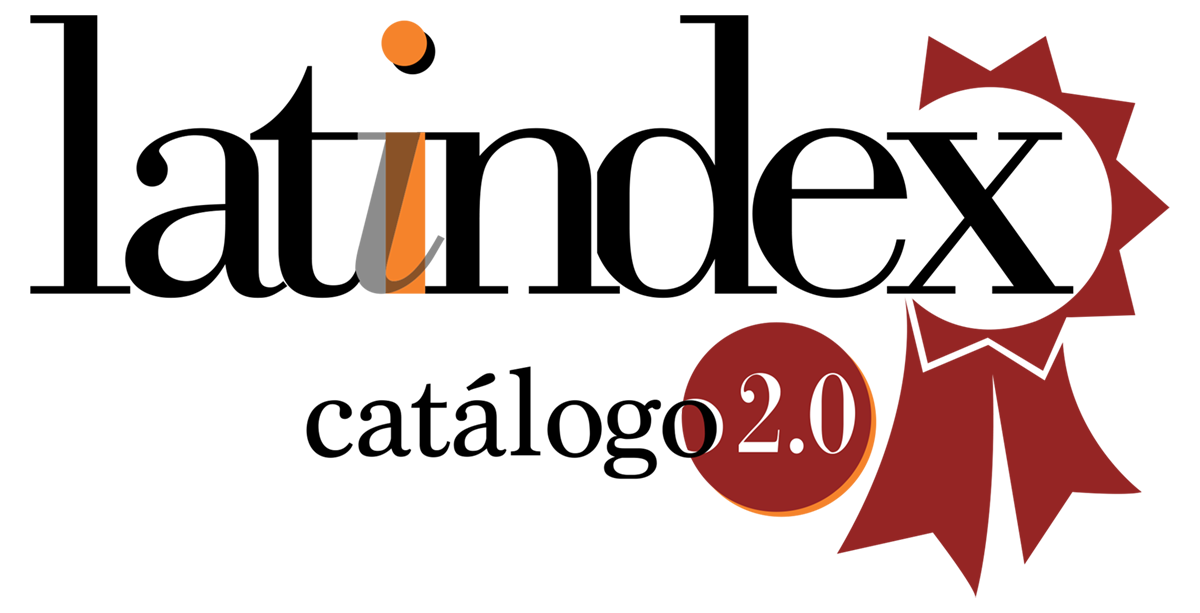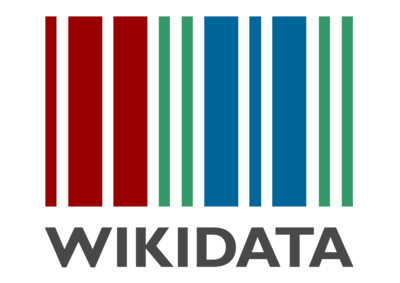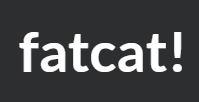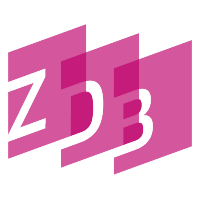The Revista Guillermo de Ockham provides an immediate and open access to its content, based on the principle of offering the public a free access to investigations to provide a global interchange of knowledge.
Unless otherwise established, the contents of this journal has a license with Creative Commons Attribution-NonCommercial-NoDerivatives 4.0 International (CC BY-NC-ND 4.0) http://creativecommons.org/licenses/by-nc-nd/4.0/
- Attribution: You must give appropriate credit, provide a link to the license, and indicate if changes were made. You may do so in any reasonable manner, but not in any way that suggests the licensor endorses you or your use.
- NonCommercial: You may not use the material for commercial purposes.
- NoDerivatives: If you remix, transform, or build upon the material, you may not distribute the modified material.
- No additional restrictions: You may not apply legal terms or technological measures that legally restrict others from doing anything the license permits.
Abstract
This article presents the results derived from a study aimed at establishing the technical and pedagogical components involved in the design and operation of a Digital Writing Center (DWC). Based on a descriptive cross-sectional mixed method design, the perceptions, knowledge, opinion and experience of undergraduate students at University of Antioquia, Colombia were analyzed. In a first moment of initial exploration, from a diagnostic questionnaire applied to 58 students and a second moment of exploration of the operation of the platform, from the registration of 122 users participating in writing workshops. The results show the potential of the DWC for improving academic writing during the professional training process of students, the possibilities and limitations for its implementation considering didactic, technical and academic characteristics that contribute to the design of the model for its operation. In conclusion, the DWC is assumed as a transversal and institutional strategy, which overcomes the remedial perspective of students' academic writing problems, focusing on the human, academic and scientific dimensions of professional training.
Keywords:
References
Amante Negrete, Y. M., y Gómez Zermeño, M. G. (2017). E-estrategias de lectura y escritura del inglés en ambientes virtuales de aprendizaje. Campus Virtuales, 6(1), 109-119. http://uajournals.com/ojs/index.php/campusvirtuales/article/view/194
Bustos Sánchez, A. (2009). Escritura colaborativa en línea: un estudio preliminar orientado al análisis del proceso de coautoría. RIED, 12(2), 33-55. https://doi.org/10.5944/ried.2.12.900
Calle-Arango, L. (2020). Centros y programas de escritura en las IES colombianas. Magis, 12(25), 77-92. https://doi.org/10.11144/Javeriana.m12-25.cpei
Calle-Arango, L., Pico, A. L., y Murillo, J. H. (2017). Los centros de escritura: entre nivelación académica y construcción de conocimiento. Cadernos de Pesquisa, 47(165), 872-895. https://doi.org/10.1590/198053143882
Carlino, P. (2013). Alfabetización académica diez años después. Revista Mexicana de Investigación Educativa, 18(57), 355-381. http://www.redalyc.org/articulo.oa?id=14025774003
Castelló, M. (2014). Los retos actuales de la alfabetización académica: estado de la cuestión y últimas investigaciones. Enunciación, 19(2), 346-365. https://doi.org/10.14483/10.14483/udistrital.jour.enunc.2014.2.a13
DeVoss, D. N., Cushman, E., y Grabill, J. T. (2013). Infrastructure and composing: The when of new-media writing. En S. Lee y R. G. Carpenter (Eds.), The Routledge reader on writing centers and new media (pp. 149-169). Routledge.
Figueroa, B., y Aillon, M. (2015). Escritura académica de un ensayo mediado por el aprendizaje colaborativo virtual. Estudios Pedagógicos (Valdivia), 41(1), 79-91. https://dx.doi.org/10.4067/S0718-07052015000100005
Flórez-Romero, R., Henao Flórez, A., y Niño-Aguilera, L. E. (2018). El proceso de escritura académica de estudiantes universitarios en un aula remota de escritura. En N. Arias-Velandia (Ed.), Aportes a la investigación sobre educación superior virtual desde América Latina: comunicación, redes, aprendizaje y desarrollo institucional y social (pp. 211-253). Publicaciones Politécnico Grancolombiano. https://doi.org/10.15765/poli.v1i613.1797
Gavari Starkie, E. I., y Tenca Sidotti, P. (2017). La evolución histórica de los centros de escritura académica. Revista de Educación, (378), 9-29. https://doi.org/10.4438/1988-592X-RE-2017-378-359
Gordillo Alfonso, A. (2017). La escritura científica: una revisión temática. Signo y Pensamiento, 36(71), 52-64. https://revistas.javeriana.edu.co/index.php/signoypensamiento/article/view/18811
Gredler, J. J. (2018). Postsecondary online students’ preferences for text-based instructor feedback. International Journal of Teaching and Learning in Higher Education, 30(2), 195-206. https://www.isetl.org/ijtlhe/pdf/IJTLHE3002.pdf
Hasanuddin, D., Emzir, E., y Akhadiah, S. (2019). Improving students’ scientific writing ability through blended learning-based collaborative learning. International Journal of Emerging Technologies in Learning (iJET), 14(20), 34-43. https://doi.org/10.3991/ijet.v14i20.11457
Hayes, J. R. (2012). Modelling and remodeling writing. Written Communication, 29(3), 369-388. https://doi.org/10.1177%2F0741088312451260
Jenaro Río, C., Castaño Calle, R., Martín Pastor, M. E., y Flores Robaina, N. (2018). Rendimiento académico en educación superior y su asociación con la participación activa en la plataforma Moodle. Estudios sobre Educación, 34, 177-198. https://doi.org/10.15581/004.34.177-198
Kilner, K., Collie, N., y Clement, J. (2019). Using innovative teaching practices to inspire critically engaged reading and writing in a neoliberal university environment. Higher Education Research & Development, 38(1), 110-123. https://doi.org/10.1080/07294360.2018.1537258
Kress, G., Jewitt, C., Ogborn, J., y Tsatsarelis, C. (2014). Multimodal teaching and learning: The rhetorics of the science classroom. Bloomsbury Academic.
Lobato Fraile, C., y Guerra Bilbao, N. (2016). La tutoría en la educación superior en Iberoamérica: avances y desafíos. Educar, 52(2), 379-398. http://dx.doi.org/10.5565/rev/educar.726
López-Gil, K. S., y Molina Natera, V. (2018). Incidencia del trabajo colaborativo docente en la enseñanza y el aprendizaje de la escritura académica. Revista Electrónica de Investigación Educativa, 20(1), 1-13. https://doi.org/10.24320/redie.2018.20.1.1477
Lozano-Díaz, A., y Fernández-Prados, J. S. (2018). Ciudadanía digital y su medida: propiedades psicométricas de una escala y retos para la educación superior. EKS, 19(3), 83-101. https://doi.org/10.14201/eks201819383101
Márquez Guzmán, S., y Gómez-Zermeño, M. G. (2018). Grupo virtual de escritura académica: una e-innovación para impulsar la publicación científica. Revista Mexicana de Investigación Educativa, 23(76), 203-227. https://www.redalyc.org/journal/140/14054854009/html/
Martínez Clares, P., Pérez Cusó, J., y Martínez Juárez, M. (2016). Las TICs y el entorno virtual para la tutoría universitaria. Educación XX1, 19(1), 287-310. https://doi.org/10.5944/educxx1.13942
Mercer-Mapstone, L. D., y Matthews, K. E. (2017). Student perceptions of communication skills in undergraduate science at an Australian research-intensive university. Assessment & Evaluation in Higher Education, 42(1), 98-114. https://doi.org/10.1080/02602938.2015.1084492
Molina, M. E. (2017). Escritura académica, argumentación y prácticas de enseñanza en el primer año universitario. Enunciación, 22(2), 138-153. https://doi.org/10.14483/22486798.11929
Nordlof, J. (2014). Vygotsky, scaffolding, and the role of theory in writing center work. The Writing Center Journal, 34(1), 45-64. https://www.jstor.org/stable/43444147
Paiz, J. M. (2018). Expanding the writing center: A theoretical and practical toolkit for starting an online writing lab. TESL-EJ, 21(4), 1-19. https://eric.ed.gov/?id=EJ1172553
Pardo, M., y Castelló, M. (2016). Teaching writing for learning at university: A proposal based on collaborative review. Infancia y Aprendizaje, 39(3), 560-559. https://doi.org/10.1080/02103702.2016.1196914
Pérez Abril, M. y Rincón Bonilla, G. (Coords.). (2013). ¿Para qué se lee y se escribe en la universidad colombiana? Un aporte a la consolidación de la cultura académica del país. Editorial Pontificia Universidad Javeriana. https://wac.colostate.edu/books/colombian/highered.pdf
Pérez-Contreras, B., González-Otero, K., y Polo-Bolaño, Y. (2018). Perfil sociodemográfico y económico de estudiantes universitarios. Búsqueda, 5(20), 48-62. https://doi.org/10.21892/01239813.391
Plappert, G. (2017). Candidate knowledge? Exploring epistemic claims in scientific writing: A corpus-driven approach. Corpora, 12(3), 425-457. http://dx.doi.org/10.3366/cor.2017.0127
Urquidi Martin, A. C., Calabor Prieto, M. S., y Tamarit Aznar, C. (2019). Entornos virtuales de aprendizaje: modelo ampliado de aceptación de la tecnología. Revista Electrónica de Investigación Educativa, 21, 1-12. https://doi.org/10.24320/redie.2019.21.e22.1866
Vivanco, G., y Gorostiaga, J. (2017). Cultura digital y diversidad: perspectivas de discursos de políticas TIC-Educación. Cadernos de Pesquisa, 47(165), 1016-1043. https://doi.org/10.1590/198053144261


